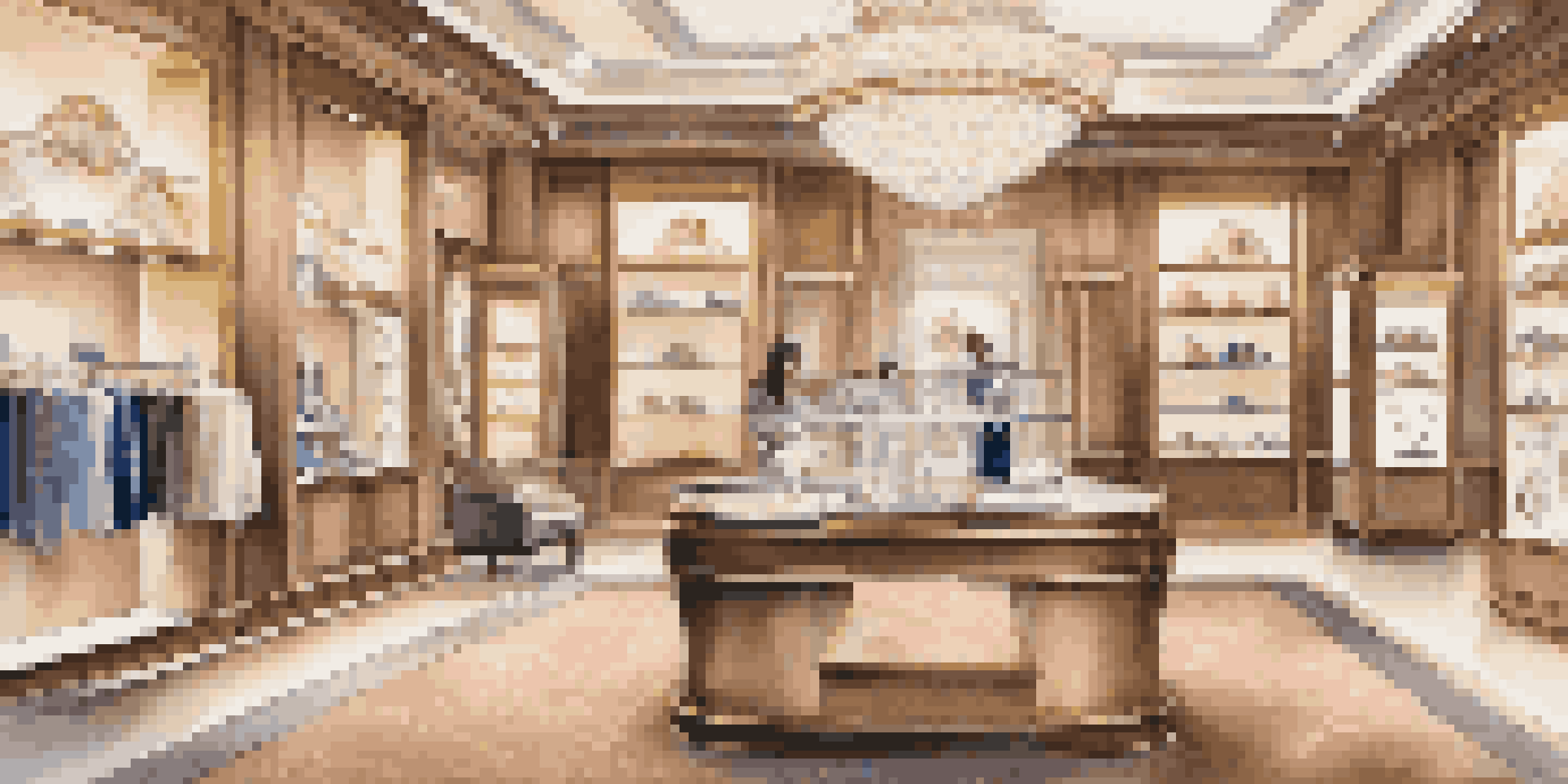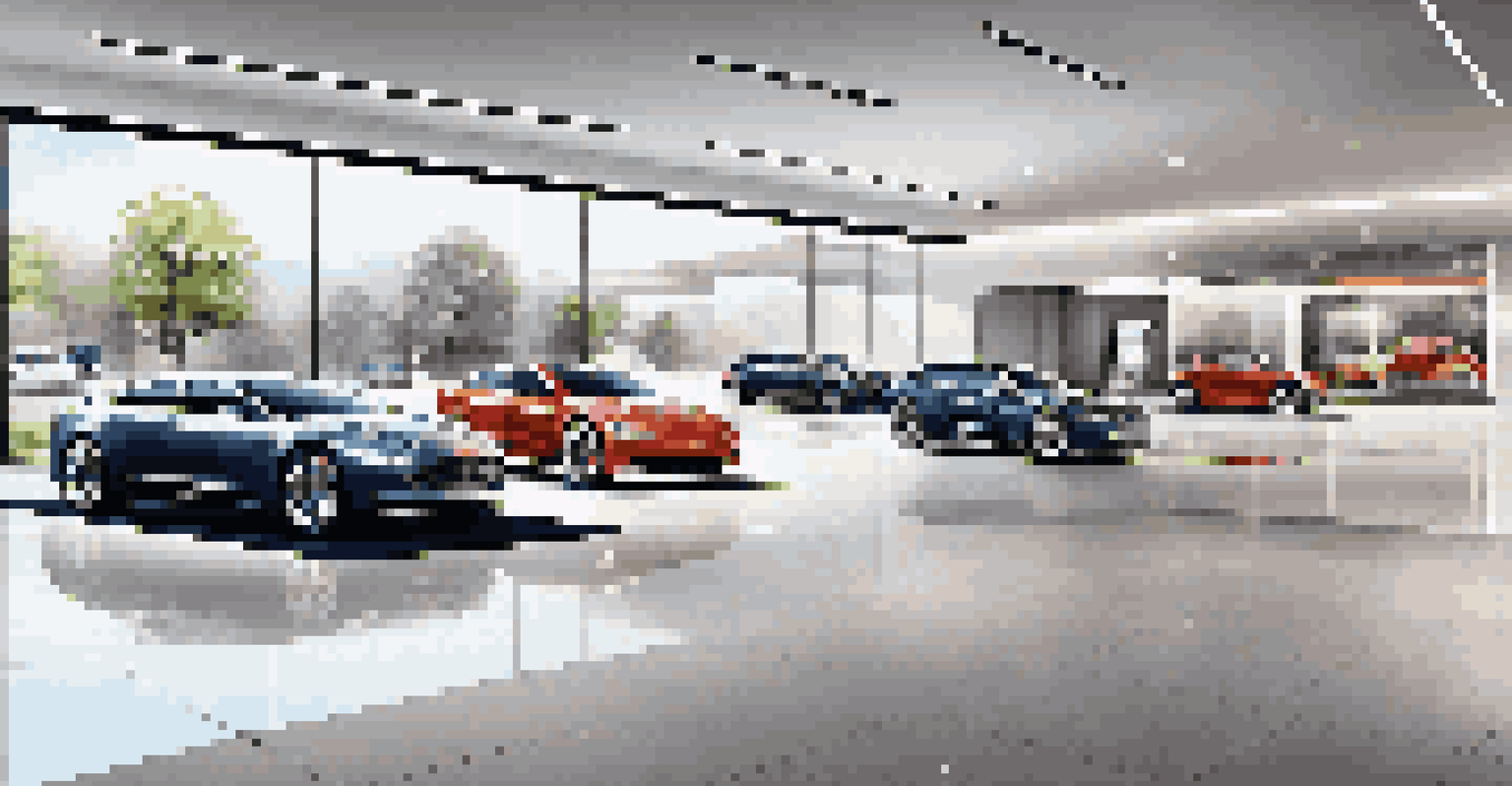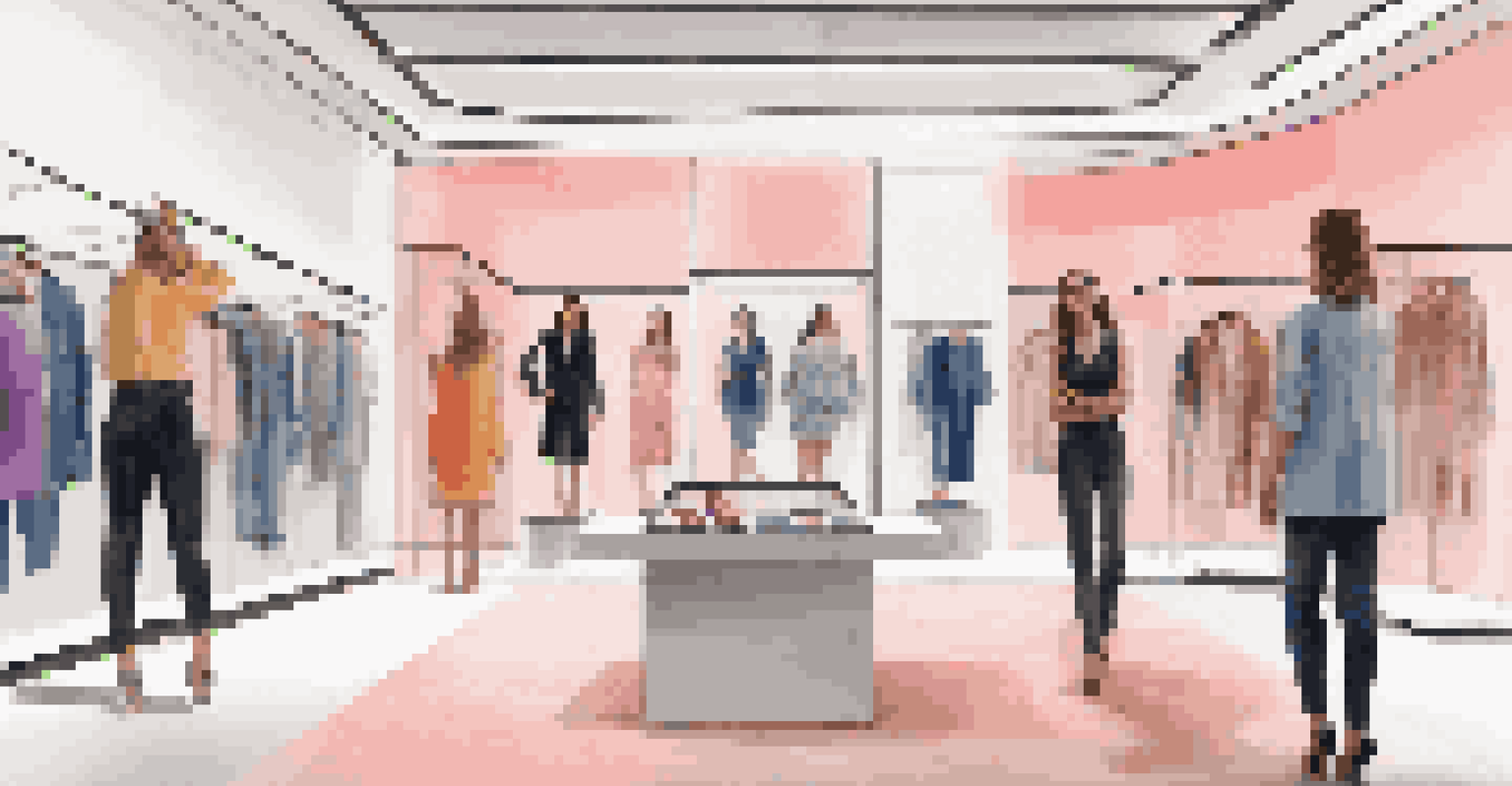Augmented Reality in Luxury Retail: Enhancing Brand Experience

Understanding Augmented Reality in Retail
Augmented Reality (AR) blends digital elements with the real world, creating interactive experiences that engage consumers. In luxury retail, where brand experience is paramount, AR offers an innovative way to captivate customers. Imagine walking into a high-end boutique and using your smartphone to see how a piece of jewelry looks on you without trying it on.
Augmented reality is a game changer for retail, allowing customers to engage with products in ways that were previously unimaginable.
This technology not only enhances the shopping experience but also allows brands to showcase their products in unique ways. For instance, luxury car manufacturers use AR to let potential buyers visualize customization options without needing a physical model. By merging the physical and digital realms, AR elevates the overall shopping experience.
As luxury brands embrace AR, they create memorable interactions that resonate with tech-savvy consumers. This shift towards interactive experiences reflects a broader trend in retail, where personalization and engagement are key to attracting discerning shoppers.
Creating Immersive Shopping Experiences
Luxury brands are increasingly leveraging AR to offer immersive shopping experiences that go beyond traditional retail. For example, high-end fashion retailers allow customers to virtually try on outfits, enhancing their confidence in making a purchase. This virtual fitting room concept helps bridge the gap between online and in-store shopping.

By providing a unique way to experience products, brands can engage customers on a deeper level. It transforms the shopping journey from a simple transaction into an engaging adventure, allowing shoppers to explore styles and fits effortlessly. This not only boosts customer satisfaction but also fosters brand loyalty.
AR Enhances Luxury Shopping
Augmented Reality transforms the luxury retail experience by allowing customers to interactively engage with products, such as virtually trying on clothing or visualizing customizations.
Furthermore, AR can enhance storytelling, allowing brands to share their heritage and craftsmanship in an interactive manner. Imagine scanning a luxury handbag with your phone and instantly learning about its material sourcing or the artisans behind it—this adds a layer of authenticity that resonates with luxury consumers.
Enhancing Personalization Through AR
Personalization is a crucial element in luxury retail, and AR technology plays a significant role in this endeavor. By utilizing AR, brands can tailor experiences to individual preferences, making customers feel valued. For instance, AR apps can analyze a shopper's past purchases and recommend products that match their style.
The future of shopping lies in personalization, and AR offers a unique pathway to create tailored experiences for every consumer.
This level of personalization not only enhances the shopping experience but also increases the likelihood of conversion. When customers feel that a brand understands their unique taste, they are more likely to make a purchase. Additionally, this data-driven approach enables brands to refine their marketing strategies and product offerings.
Moreover, AR can assist in creating personalized marketing campaigns that resonate with target audiences. By using AR experiences in social media advertising, luxury brands can attract potential customers in a visually appealing way, ultimately driving traffic to their online or physical stores.
Fostering Customer Engagement and Loyalty
Engagement is key in luxury retail, and AR provides a dynamic platform for brands to connect with their customers. Through AR experiences, brands can create interactive content that encourages users to share their experiences on social media. This word-of-mouth marketing is invaluable, especially in the luxury sector where exclusivity and brand perception are vital.
For example, a luxury cosmetics brand might develop an AR app that allows users to try makeup virtually and share their looks with friends. Such features not only enhance customer experience but also generate organic buzz around the brand. In today’s digital age, this kind of engagement can significantly influence purchasing decisions.
Personalization Through AR
AR technology enables luxury brands to tailor shopping experiences to individual preferences, enhancing customer satisfaction and increasing conversion rates.
Additionally, loyalty programs integrated with AR experiences can further strengthen relationships with customers. Offering exclusive AR content or experiences to loyal customers can make them feel appreciated, encouraging repeat business and fostering brand loyalty.
The Role of AR in Sustainable Luxury Retail
Sustainability is becoming increasingly important in the luxury sector, and AR can play a significant role in promoting eco-friendly practices. By using AR, brands can provide consumers with information about sustainable materials and production processes, enhancing transparency. This can help consumers make informed choices that align with their values.
For instance, an AR experience might showcase how a luxury brand sources its materials from sustainable suppliers. By highlighting these efforts through engaging visuals, brands can reinforce their commitment to sustainability and attract environmentally conscious consumers. This transparency can significantly influence brand perception and loyalty.
Moreover, AR can help reduce waste in the retail process. By allowing customers to visualize products virtually, brands can minimize returns and the associated environmental impact. As sustainability becomes a priority for many consumers, integrating AR into their strategies can set luxury brands apart in a competitive market.
Challenges and Considerations in Implementing AR
While the benefits of AR in luxury retail are significant, there are challenges to consider when implementing this technology. One major concern is ensuring that the AR experience aligns with the brand's identity and values. A poorly designed AR feature can detract from the luxury experience rather than enhance it.
Additionally, not all consumers may be familiar or comfortable with using AR technology. Brands must take into account their target audience’s tech-savviness and provide user-friendly solutions. Offering tutorials or in-store assistance can help bridge this gap, ensuring that all customers can enjoy the benefits of AR.
Sustainability and Transparency
AR can promote sustainable practices in luxury retail by providing consumers with information about eco-friendly materials and production, fostering brand loyalty.
Finally, investment in AR technology can be substantial, and brands need to weigh the potential return on investment. Conducting thorough market research and pilot testing can help brands make informed decisions about their AR strategies, ensuring they deliver value to both the business and the consumer.
The Future of AR in Luxury Retail
As technology continues to evolve, the future of AR in luxury retail looks promising. Brands are likely to explore even more innovative ways to engage customers through immersive experiences. From virtual reality fashion shows to AR-enabled personal shopping assistants, the possibilities are endless.
Furthermore, advancements in artificial intelligence could enhance AR experiences by providing real-time recommendations based on user behavior and preferences. This could create a seamless shopping experience that feels tailored to each individual, further solidifying brand loyalty.

Ultimately, as consumers increasingly seek personalized and engaging experiences, luxury brands that embrace AR will likely stay ahead of the curve. By continuously innovating and adapting to consumer needs, they can ensure that their brand experiences remain relevant and captivating in an ever-changing market.